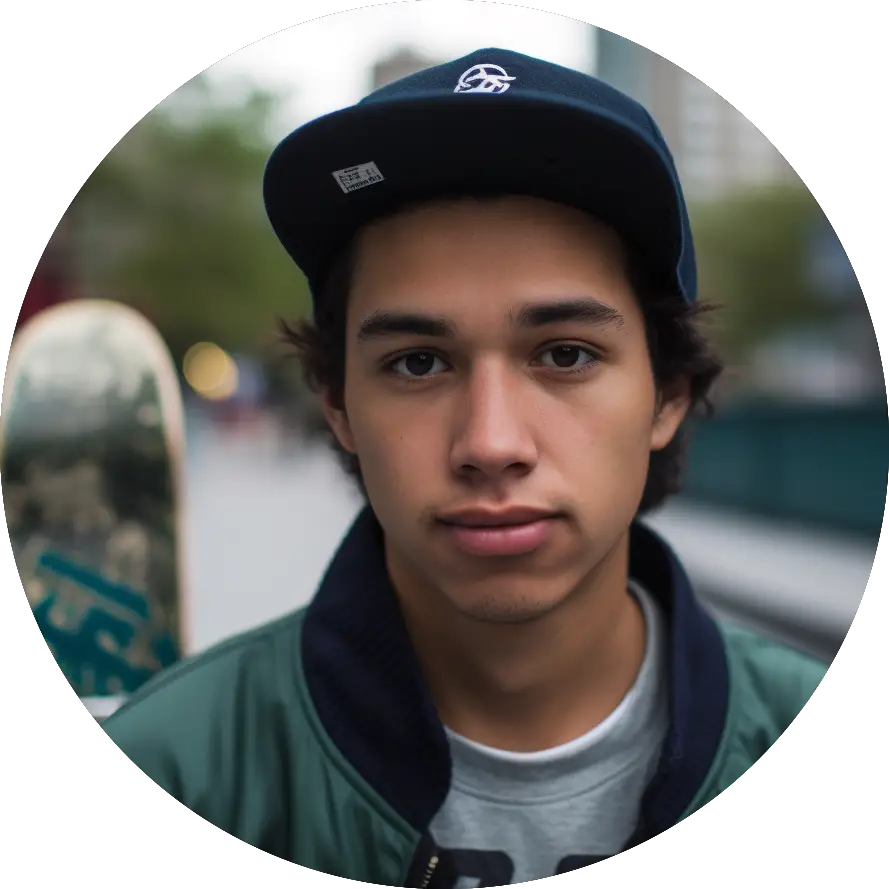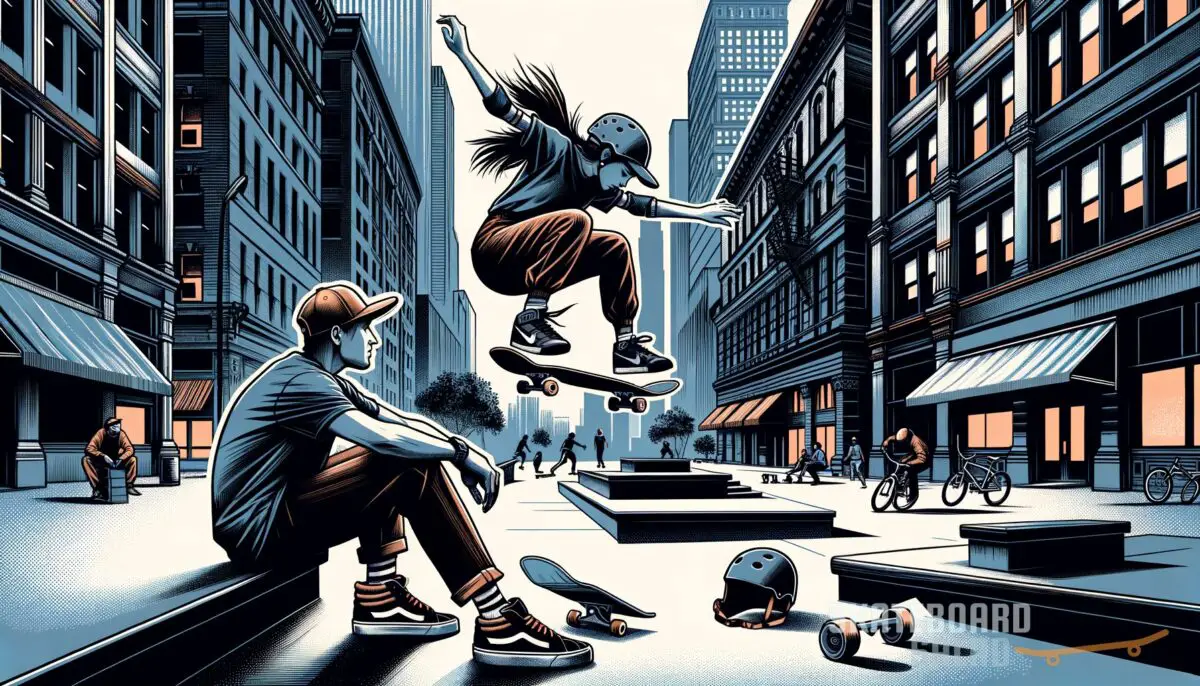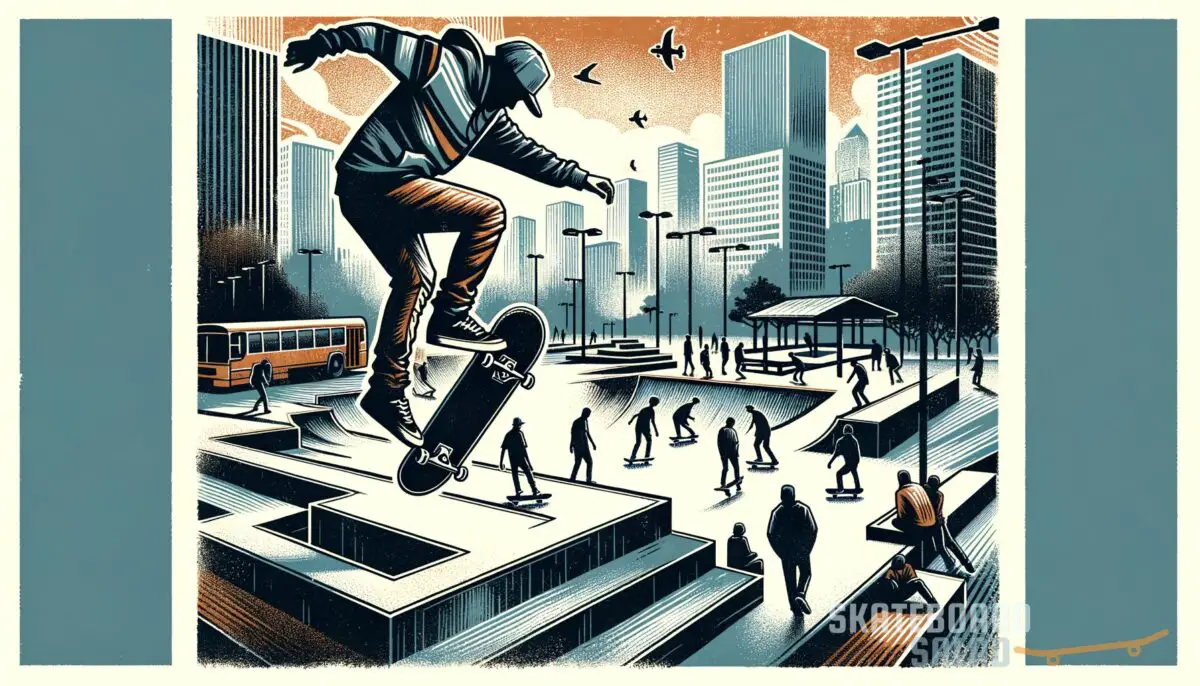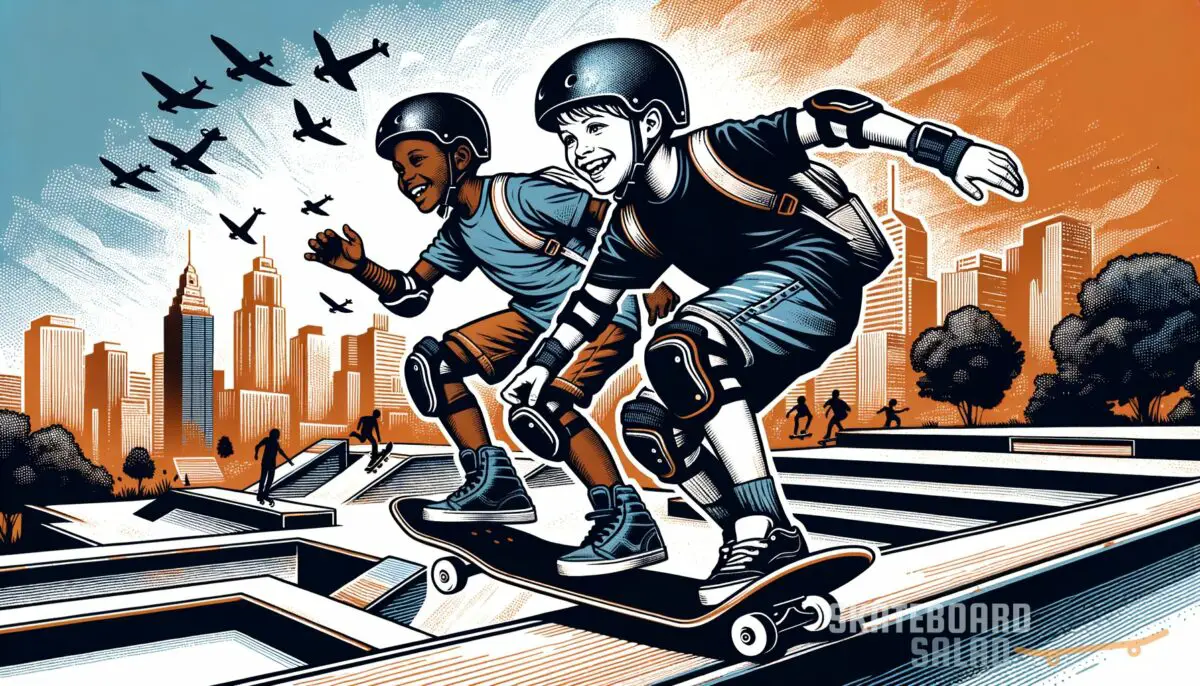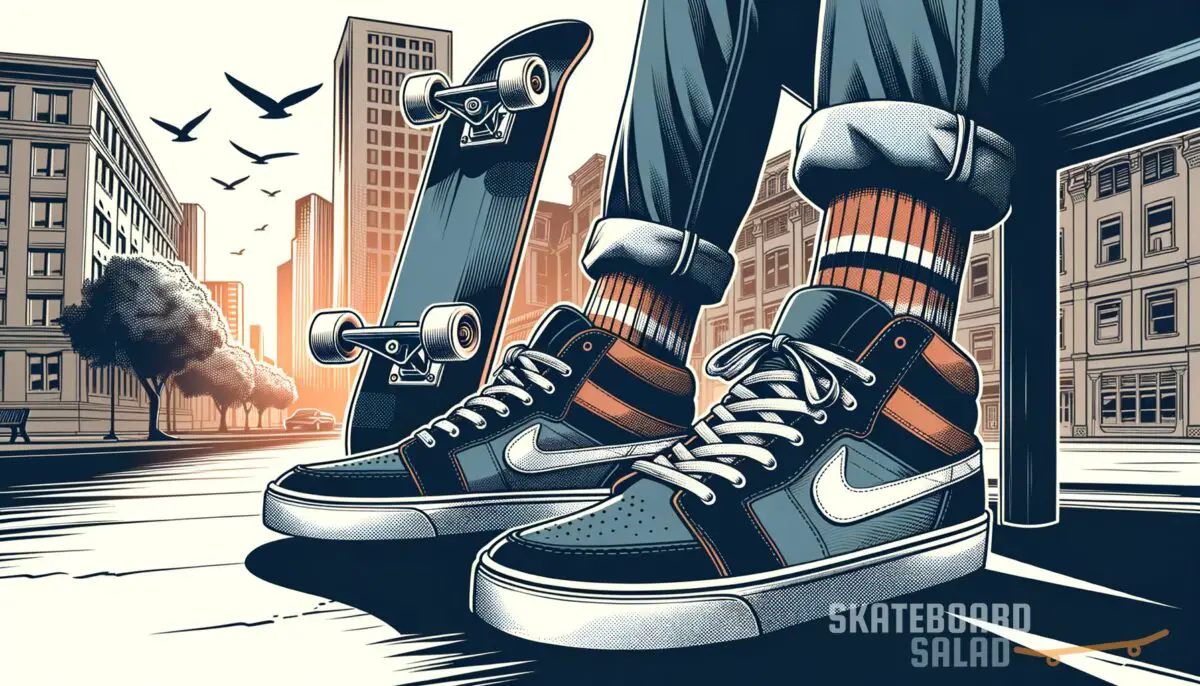I remember the first time I gripped my deck and thought, “Man, am I even made for this?” Prowling through the skateparks and streets of New York, witnessing debates as fiery as a backside smith grind on a ledge, it hit me: to make your mark, you need to start with the best of the basics in skateboarding. It’s not just about agility and style; it’s about what’s beneath your feet.
Check out the top decks that can withstand the toughest streets to kick off your journey. We’ll take a dive into how long it might take you to catch that perfect ride on your board.
Key takeaways
- Consistent practice is crucial for progression in skateboarding.
- Mastering the basics like balancing and pushing are early milestones.
- Skateboarding culture offers a supportive community and lifestyle.
Can you master the concrete waves quickly?
Let’s face it, stepping on a skateboard for the first time is a mix of excitement and intimidation. You’ve seen those skaters cruising effortlessly, popping tricks like they were born on the board, but how long until you’re shredding with the best of them? Well, you might not be landing a tre-flip overnight, but dedication and practice can have you skating in no time.
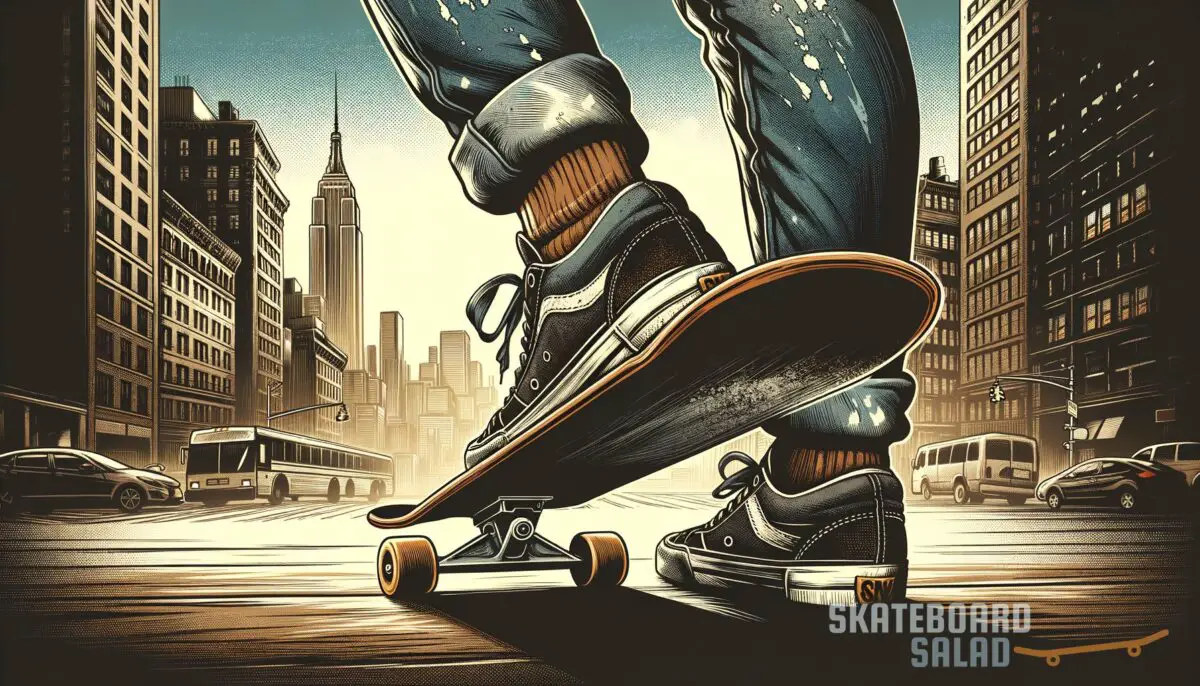
Here’s a list of milestones you’ll likely hit on your journey from newbie to pro, along with a realistic timeframe.
1. Catching your balance
Learning the delicate art of balance is your entry ticket into the world of skating. If you’re aiming to stay upright on your board without kissing the pavement, it might take you a few precious hours. Start by placing your skateboard on a stationary surface like grass or carpet, which eliminates any unwanted mobility, and just stand.
Shift your weight and get used to how the board feels under your feet before hitting the concrete.
Once you move onto a harder surface, you’ll feel the board’s desire to roll; that’s when the true test of balance comes in. Take it from me, perfecting your stance is non-negotiable. So before setting off, consider the surface you’re choosing to learn on, whether it’s the forgiving grass or a no-nonsense concrete stretch.
2. The push and roll
Pushing is the most fundamental part of skateboarding—it’s like learning to pedal a bike. We’re talking maybe 30 minutes until you can push and coast a short distance. Find your dominant foot (are you goofy or regular?) and start pushing off, focusing on a smooth glide and steady posture.
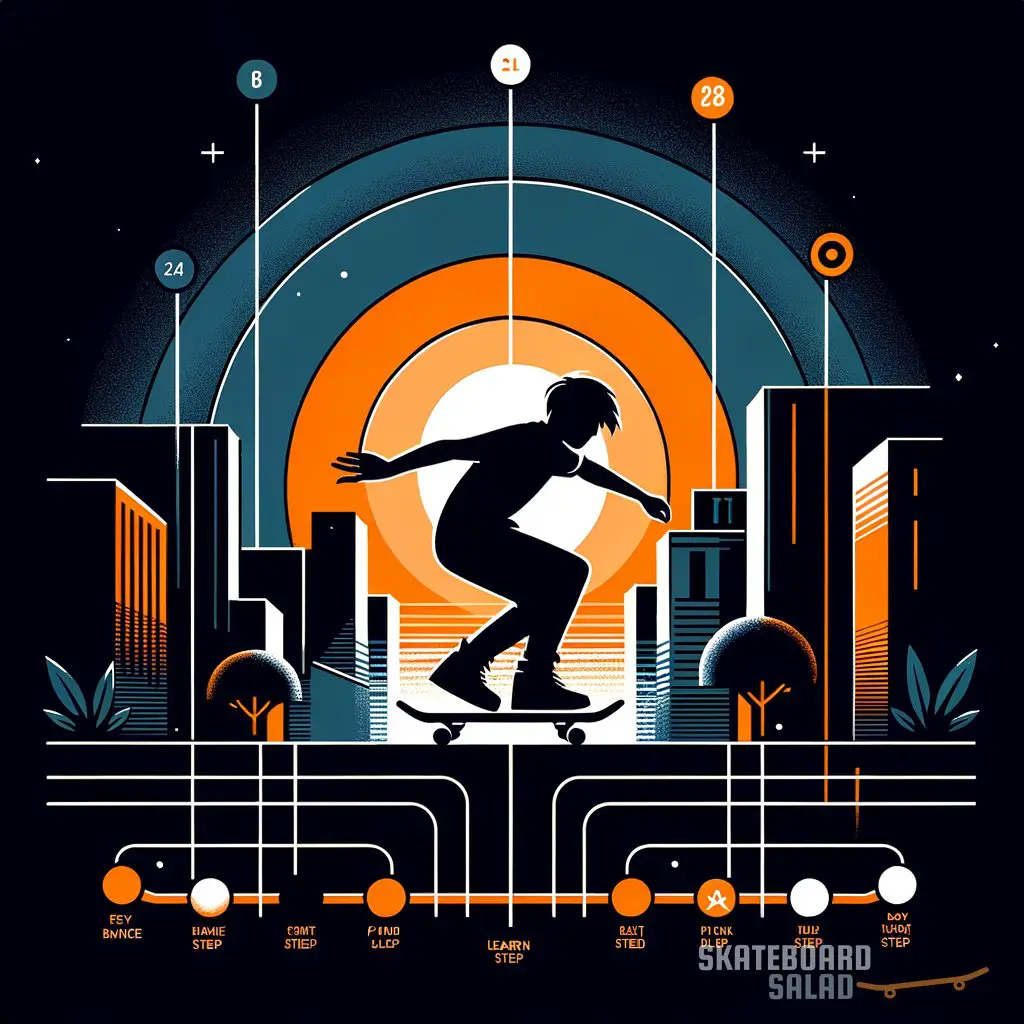
It’s tempting to jump straight into shredding, but trust me, refinement in pushing will pay dividends down the line.
Scooting around is one thing, but mastering a strong, efficient push is another. Give yourself a few days of consistent practice, pushing and gliding, to get the hang of it. You’ll want a skateboard with primo bearings, so check out the best skateboard bearings to ensure a smooth ride.
The better your setup, the easier it’ll be to get that seamless momentum.
3. Turning and carving
Making your plank carve the streets like a hot knife through butter will take about a quarter hour to get a feel for, but to nail those precise turns, give it a week or two. It’s all about easing your weight into your toes or heels and letting the deck sweep in that direction. Think of it as a dance—you lead, and your board follows.
As you’re pushing and rolling, experimenting with slight weight shifts will see you try mild carves. Check out top skateboard trucks for beginners, as the right trucks will greatly influence your carving capabilities. You’ll soon find that balance and motion are an inseparable duo in the skate world.
4. Coming to a halt
Yeah, stopping—a crucial, usually overlooked aspect. Got 5 minutes? You can learn to slow your roll.
Gradually drop your back foot to the ground to shave off speed, but keep it light and controlled to avoid a rough bail. As you get braver with your speed, stopping will become just as important as going.
Stopping isn’t just slamming your foot down; it’s about weight distribution and a smooth transition to a halt. It’s a life-saver, literally. While it might only take minutes to understand, perfecting a smooth, safe stop will likely require a couple of sessions of practice, so take the time to nail it early on.
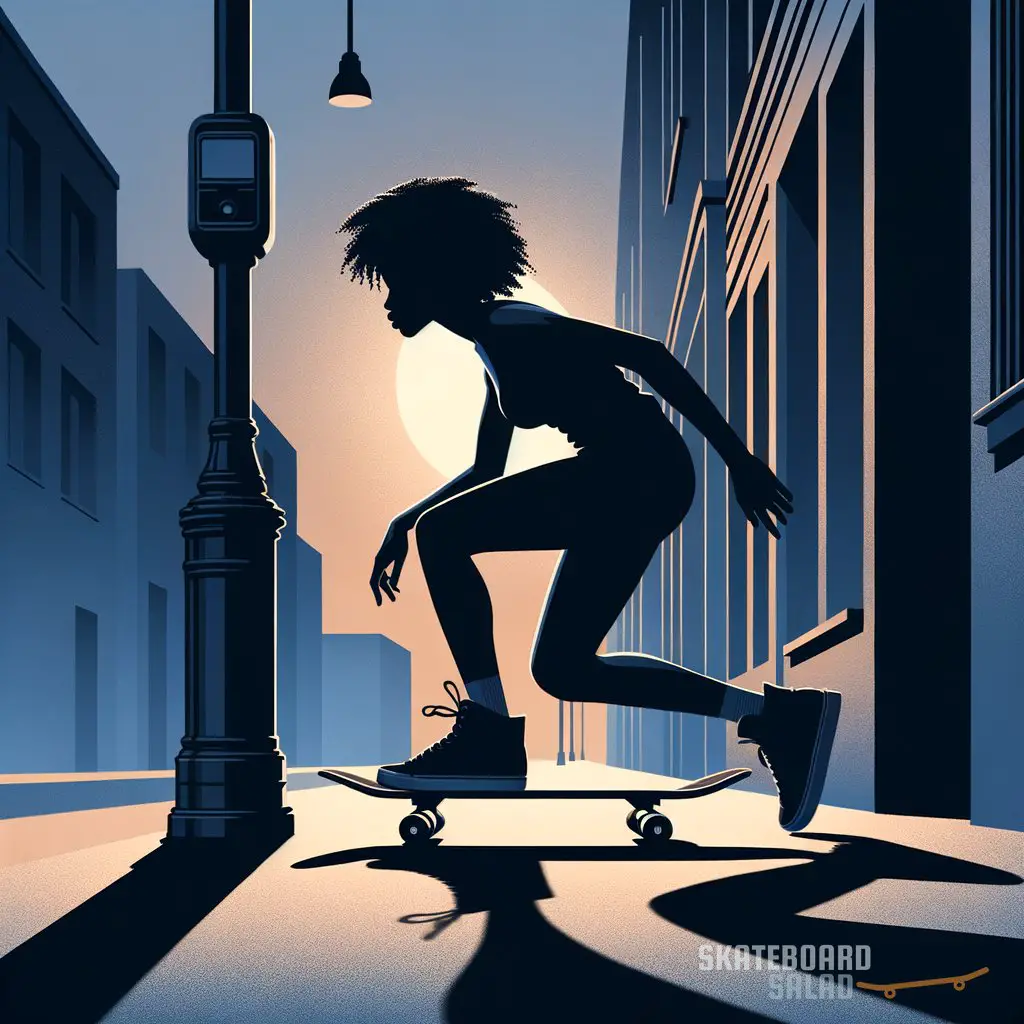
5. Your first trick set
Once you’ve nailed the basics, you’re probably itching to pop some tricks. Settle in for weeks, maybe a few months to start landing simple ones like ollies or shuvits. How quickly you tackle these bad boys is mostly down to your persistence and how comfy you are with your board.
As the weeks roll into months and muscle memory builds up, your catalog of tricks will expand. Start with the basics and work your way up, maybe setting sights on a killer kickflip. Trick progression feels like climbing a ladder—one step at a time.
Dive into the sequence of skateboard tricks to learn for a better learning curve.
“Mastering a strong, efficient push is foundational for skateboarding—like learning to pedal a bike. Just as with cycling, practice yields ease and efficiency, letting the skater cover longer distances with less effort. Remember, the dance between balance and motion is what brings skateboarding to life.”
Remember, these are rough estimates. Every skater’s journey is different. If it takes you longer, no stress—it’s all part of the ride.
Keep pushing, learning, and riding, and you’ll be speaking fluent skateboard lingo before you know it!
Enjoi Whitey Panda Complete Skateboard

Enjoi Whitey Panda Complete Skateboard
More skateboarding tips
Stepping onto a board isn’t just about keeping your balance and moving forward; it’s about embracing a whole lifestyle. Skateboarding comes with its own culture, language, and, of course, a set of hacks to help you progress faster. Below are some nuggets of wisdom that can help you transform from a hesitant beginner to a confident rider.
- Regularly watch skate videos for inspiration and technical insight.
- Ensure your skate gear is top-notch by checking out the best skateboard setup for beginners.
- Vary your practice terrain to improve adaptability.
- Incorporate skate-specific exercises into your fitness routine to boost agility and strength.
- Set realistic goals for each practice session and keep track of progress.
- Skate with experienced riders and learn from their style and tips.
- Take regular breaks during practice to avoid burnout and injuries.
Skateboard learning dos and don’ts
When you’re starting out on the skateboard, it’s easy to get drawn into bad habits that can slow down your progress or even put you at risk of injury. Here’s a chart of dos and don’ts that’ll keep you on track and ensure you’re polishing your skills the right way.
| Do | Don’t |
|---|---|
| Wear proper safety gear | Neglect helmet and pads for short rides |
| Progress at a pace comfortable for you | Rush into complex tricks too soon |
| Practice consistently | Get disheartened by slow progress |
| Learn to fall properly to avoid injuries | Be reckless with your skating |
| Keep your skateboard maintenance in check | Use worn-out or unsuitable gear |
| Skate in suitable environments | Practice on busy streets or unsafe areas |
| Use quality wheels suitable for your style | Skimp on the quality of your skateboard parts |
Make these table tips your credo, and your deck will become a faithful steed on the asphalt quest.
Advantages and disadvantages of skateboarding
Ripping through the streets, nailing a perfect ollie, feeling the wind brush past you—it’s no wonder that skateboarding captures hearts. But with its killer style and adrenaline rush come a few bumps along the way. Let’s weigh up the pros and cons to give you a full picture of what you’re rolling into.
The upsides of skating
- Provides a full-body workout and improves cardiovascular health.
- Enhances coordination, balance, and spatial awareness.
- Cultivates a sense of community and belonging.
- A sustainable and affordable mode of transportation.
- Fosters creativity and self-expression in a unique sport.
The flip side of the board
- Risk of injury, particularly for beginners.
- Sometimes seen as disruptive or unwelcome in public spaces.
- Depending on where you live, limited access to skateparks and legal street spots.
- Weather-dependent activity—rain or snow can ruin skate plans.
- Gear wear-and-tear can be costly over time, as quality skateboarding equipment isn’t cheap.
Skateboarding is a balance of give and take, but for those who fall for it, the ride is worth every scraped knee and every perfected trick. Keep these in mind as you navigate your path in skating.
In my opinion, as someone who’s still grasping the flip and grind of it all, skateboarding is as much an art form as it is a sport. Each time I watch a more seasoned skater at the park, it strikes me how they blend physical prowess with a touch of personal flair—every kickflip and grind seems to tell a story. You don’t just hear the snap of the board; you see the narrative of hard knocks and triumphs.
And while my kickflips may still look more like clumsy flops, the lure of eventually nailing that trick is too tantalizing to resist.
Truthfully, I think there’s nothing else quite like the freedom you feel on a board. It’s a culture, a community, and a way to carve out your niche in the bustle of the city. Whether you’re into street skating or are just starting to brave the ramps, taking the time to learn skateboarding is a journey into self-expression on wheels.
I recommend checking out some tips on how to learn skateboarding as an adult; it’s never too late to start.
If you are a visual learner, check out this video titled ‘How long does it take to learn to ride a skateboard?’
Frequently asked questions (FAQ)
How much time should I dedicate to skateboarding practice each week?
While there’s no one-size-fits-all answer, aiming for sessions that last 30 minutes to an hour, several times a week, is a solid plan. Consistency is key—skateboarding is about muscle memory, which builds best with regular practice. If you can carve out time daily, even better!
You’ll notice improvements faster the more you step on that board.
Can I learn to skateboard without going to the skatepark?
Absolutely! You can start learning on any flat, smooth surface. Driveways, parking lots, or even your back patio can serve as perfect starting points for mastering balance and basic movements.
Hit the skatepark once you have a bit of confidence. It’s an awesome place to progress and learn from watching others, but it’s not essential for the absolute basics.
Is skateboarding a viable workout, and can it help with weight loss?
Definitely! Skateboarding is an excellent full-body workout that can contribute to weight loss. It engages your core, improves balance and flexibility, and raises your heart rate—especially when continuously pushing or tackling those uphill battles.
Plus, it’s way more fun than a treadmill!
Final thoughts
As we wrap up this ride, remember that learning to skateboard is a process filled with highs, lows, and plenty of scrapes. Whether you’re just starting to balance on a board or you’re moving on to mastering your first set of tricks, the journey is yours to define. Embrace every moment, celebrate every small victory, and never lose sight of why you stepped on the board in the first place—the sheer thrill of it.
Skateboarding is more than just a sport; it’s a lifestyle that embodies creativity, resilience, and community.
How long did it take you to feel confident on your skateboard? Did I cover everything you wanted to know? Let me know in the comments section belowI read and reply to every comment. If you found this article helpful, share it with a friend, and check out my full blog for more tips and tricks on mastering the art of skateboarding.
Thanks for reading and keep pushing towards your next skate milestone!

